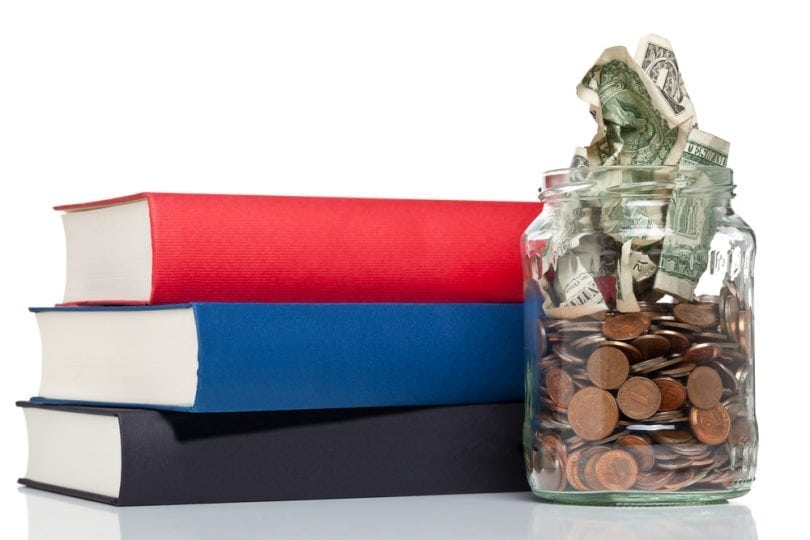Americans now collectively hold nearly $1.6 trillion in student loan debt. The benefits of the government wiping away all student loan debt have been discussed lately, but the unfortunate truth is that most proposals are unrealistic, unlikely, or both.
But while erasing $1.6 trillion of debt is unlikely, most Americans who are struggling to repay student loans don’t realize is that there are already a number of student loan forgiveness programs offered by the government. In fact, the Consumer Financial Protection Bureau estimates that roughly 25% of American workers could qualify for one of the most generous programs – the Public Service Loan Forgiveness (PSLF) program. However, as of 2016, only 139 people were on track to achieve loan forgiveness through the program any time soon.
If you have federal student loan debt and are employed, you may have a chance at qualifying for PSLF and not even realize it. Here’s everything you need to know about the program.
What is Public Service Loan Forgiveness (PSLF)?
Public Service Loan Forgiveness is a program offered by the federal government that is open to borrowers employed by the government or not-for-profit organizations and working in certain public service jobs, such as nursing, teaching, or social work. The program forgives federal direct student loan debt after 120 qualifying payments have been made.
Do I qualify for Public Service Loan Forgiveness?
Understanding eligibility requirements for PSLF can be challenging, which is likely why so many qualified borrowers are unaware that they could apply for the program. Your eligibility will depend on your loan type, employment, and repayment plan.
Qualifying Loans
Federal direct loans are the only student loans that are eligible for PSLF. These include:
- Federal Direct Subsidized Loans
- Federal Direct Unsubsidized Loans
- Federal Direct PLUS Loans
- Federal Direct Consolidation Loans
However, if you have federal student loans that don’t qualify for PSLF but do qualify for student loan consolidation, you can consolidate them through a Federal Direct Consolidation Loan, and that would make you eligible for PSLF.
Qualifying employment
You must be employed by either the government – at the federal, state, or local level – or a qualifying not-for-profit organization in order to be eligible for PSLF. You must also be employed full-time. If your work is religious or partisan in nature, you probably won’t qualify for PSLF. Otherwise, your particular job isn’t as important as who your employer is. You can change jobs while working toward PSLF as long as you remain with a qualifying employer.
Qualifying payments
You must make 120 qualifying payments in order to have your remaining student loan balance forgiven. This means that PSLF takes at least 10 years to achieve. Qualifying payments are payments made after October 1st, 2007, made for the full amount shown on your bill. They cannot be made more than 15 days late, and they must be made under a qualifying repayment plan.
Qualifying repayment plans
You must be enrolled in a qualifying repayment plan in order to participate in PSLF. Qualifying repayment plans are all income-driven repayment plans, which base your monthly payments on your income level.
These plans typically set your monthly payments at 10% to 15% of your discretionary income, which is your income minus 150% of the poverty line for your household. This means that income-driven repayment plans can actually save you a lot of money on your monthly payments, even though they do cost more in interest in the long run.
These qualifying repayment plans include:
- Revised Pay As You Earn Repayment Plan (REPAYE)
- Pay As You Earn Repayment Plan (PAYE)
- Income-Based Repayment Plan (IBR)
- Income-Contingent Repayment Plan (ICR)
While the Standard Repayment Plan technically qualifies for PSLF as well, this plan is a 10-year repayment plan. Because your balance is only forgiven after at least 10 years of qualifying payments, you wouldn’t actually receive any loan forgiveness under the Standard Repayment Plan.
How do I apply for Public Service Loan Forgiveness?
The government asks you to submit an Employment Certification for Public Service Loan Forgiveness form first. This will let you know whether or not your employment and payments even qualify for PSLF. You can then re-submit this form periodically to ensure you’re on track to achieving PSLF throughout your repayment process. After 120 qualifying payments, you can submit the final form which will determine whether or not your remaining loan balance is forgiven.
Is Public Service Loan Forgiveness right for me?
Student loan forgiveness may sound like a financial life saver, but the reality is that while it is a good deal for some, it’s not always the best option. Because it takes at least ten years to achieve, you do end up paying a significant amount of interest by the time your loans are forgiven.
On top of that, being on an income-driven repayment program means that your monthly payments are lower, but you’re paying more in interest over time. This can result in you actually paying more, over time, through PSLF than through a standard repayment plan.
Finally, PSLF does require you to work in public service positions that typically pay less than other jobs you might be able to get. It’s important to take into consideration the income you’re losing out on by staying with an eligible employer for ten years.
Public Service Loan Forgiveness is best for borrowers with extremely high loan balances and unmanageable monthly payments who already planned to work in public service positions anyway.
If you’re overwhelmed by student loans and have dreamt about what it would be like to simply stop paying your student loans altogether, know that there are options out there. Even if you don’t qualify for PSLF, there are always options for more flexible repayment plans or even other loan forgiveness options. Anything is better than making late payments or forgoing them completely.




